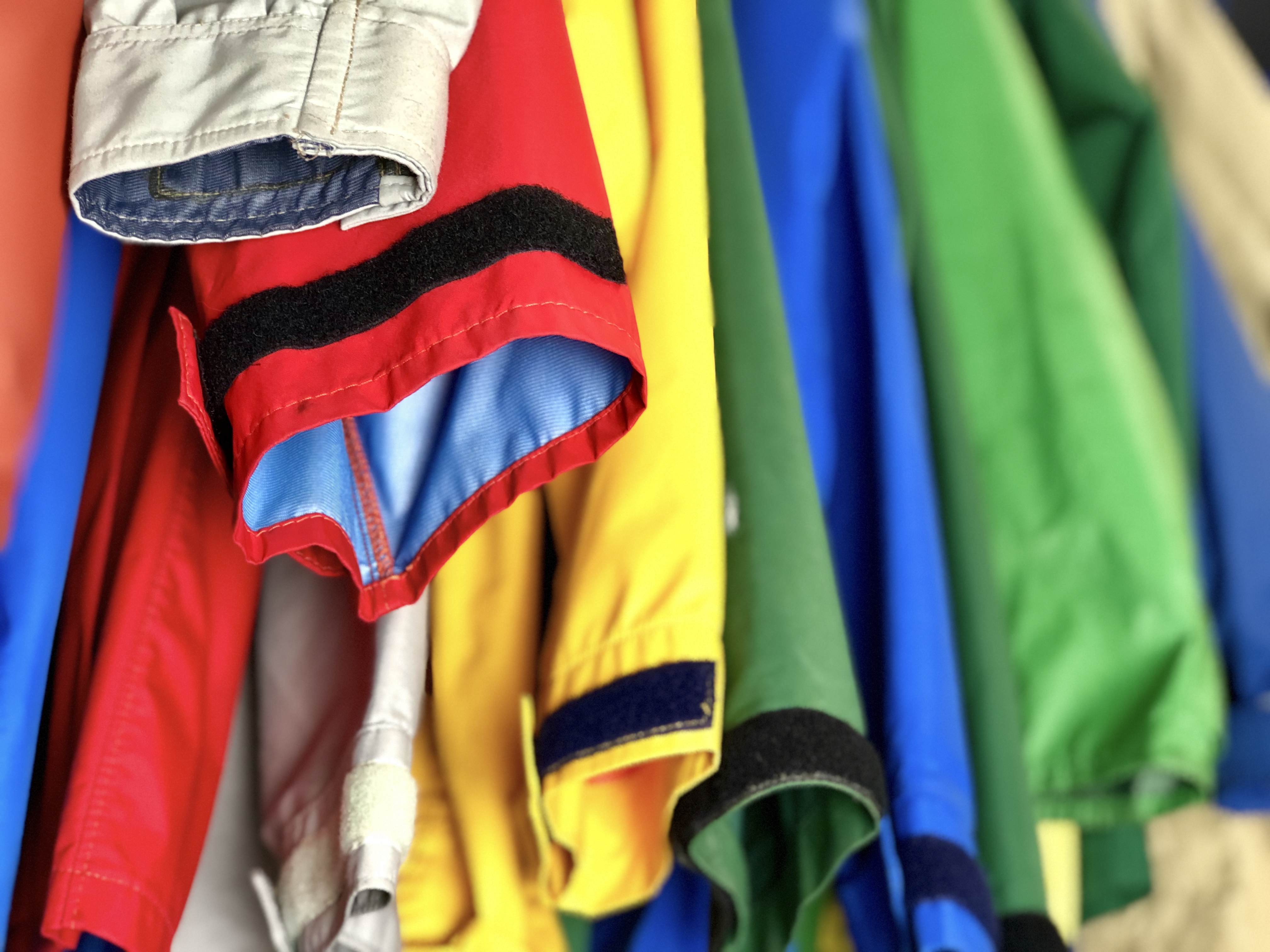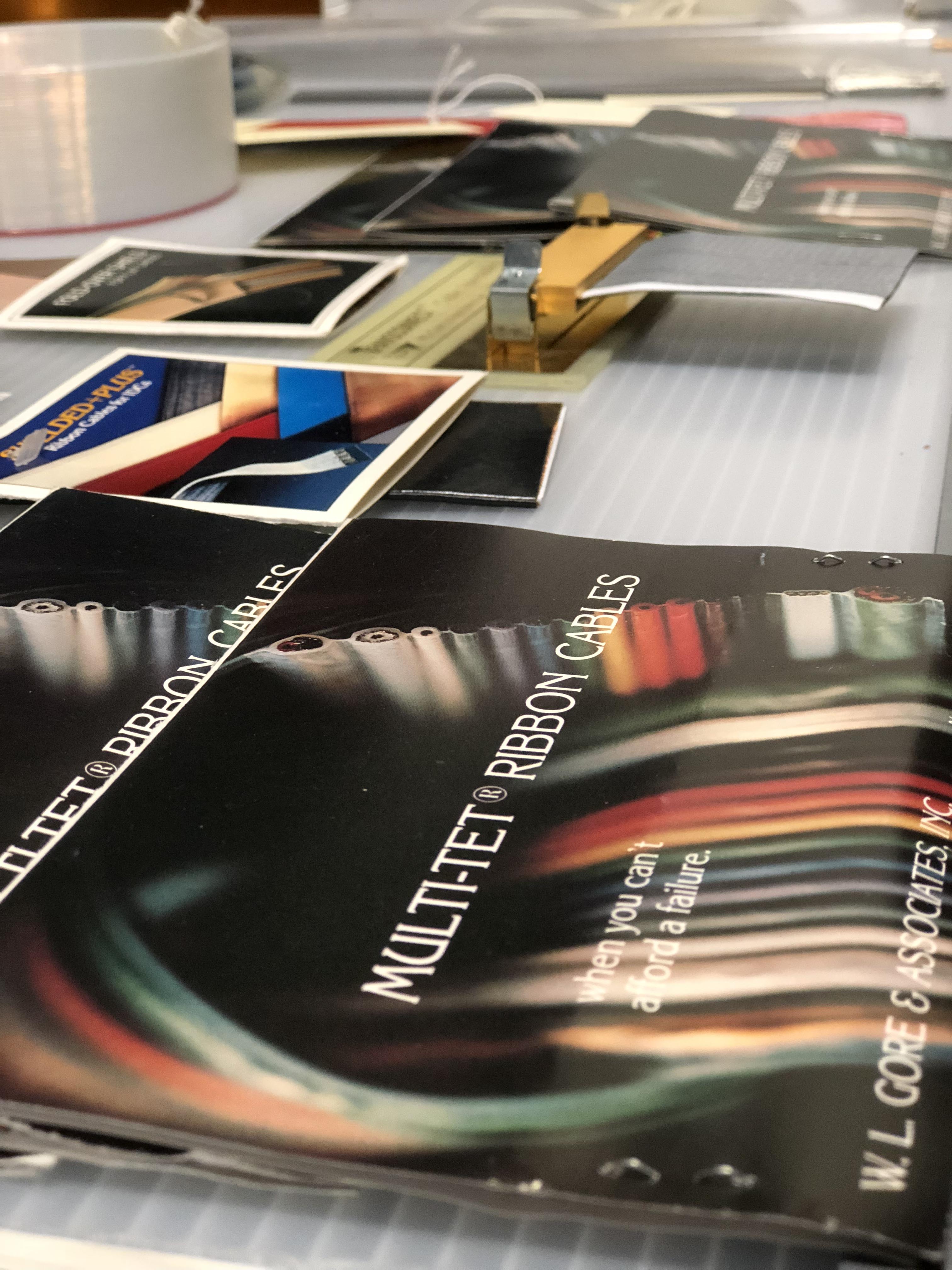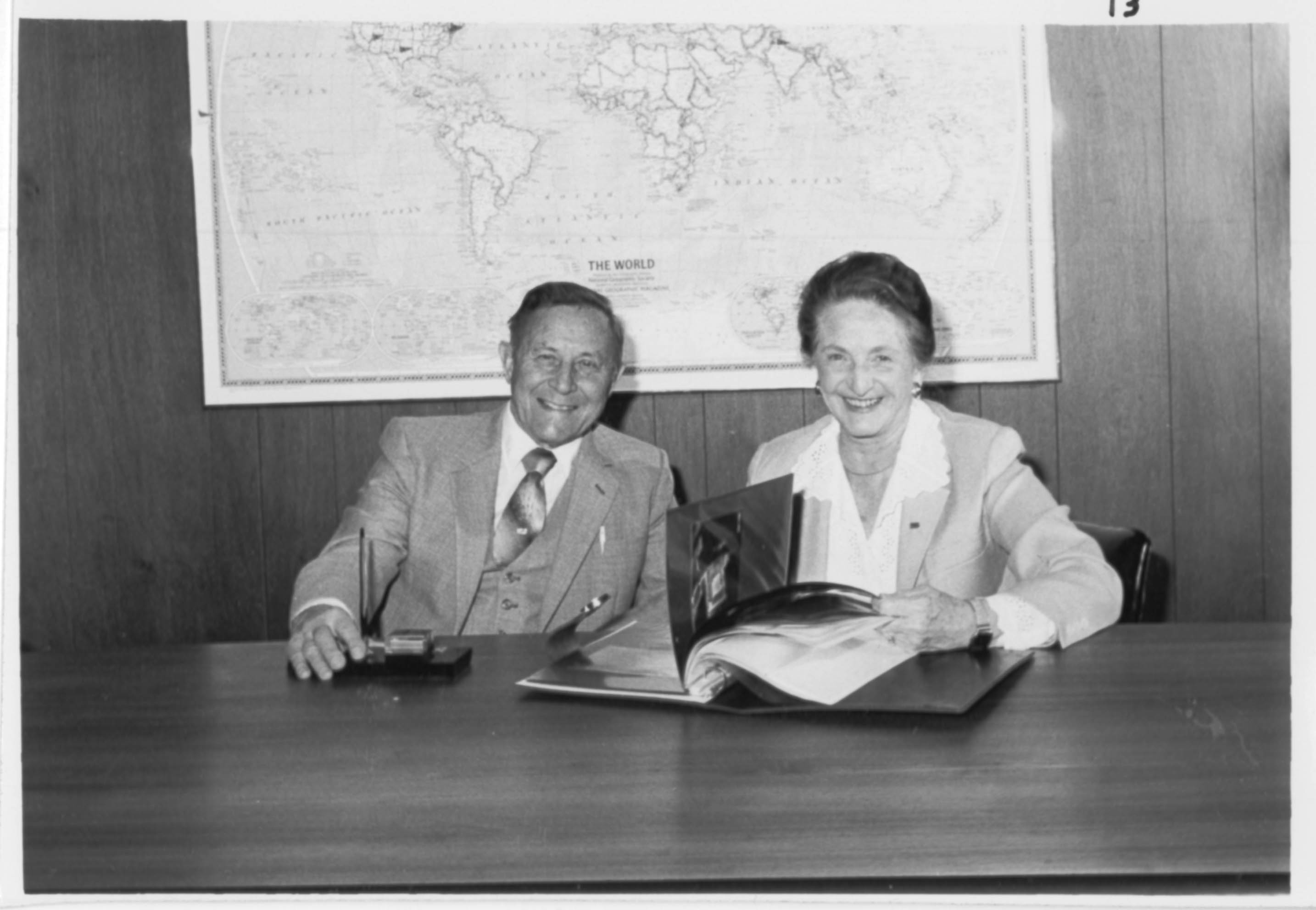- About Archives
- About SAA
- Careers
- Education
- Publications
- Advocacy
- Membership
 Backcountry parkas and prototypes from the 1970s are some of the earliest examples of GORE-TEX fabrics garments in the Gore Archives collection.
Backcountry parkas and prototypes from the 1970s are some of the earliest examples of GORE-TEX fabrics garments in the Gore Archives collection.
By Alyce Graham Stiles, Heritage Communications/Archives
The world’s premier collection of GORE-TEX garments lives in a climate-controlled room with an FM-200 fire suppression system at a W. L. Gore & Associates facility in Newark, Delaware. It’s an archives storage space converted from what had been an overhead observational platform when the building was a manufacturing facility. The floor below hummed with machinery producing microwave coaxial assemblies insulated with expanded polytetrafluoroethylene, which is also the key ingredient in the collection of GORE-TEX garments now housed in the Gore Archives.
In fact, expanded polytetrafluoroethylene, or ePTFE, is the key ingredient in almost every Gore product. It’s the center of Gore’s work as a global high technology material science company, researching, developing, and commercializing unique, fluoropolymer-based products with a focus on improving life. These products reach many industries, though Gore is probably best known for its fabrics products. The backpacking parkas, high fashion rainwear, and firefighting turnout gear in the Gore Archives show the work of forty years of technological innovation in fabrics. GORE-TEX garments changed the way people experience the outdoors. A GORE-TEX jacket appeared in the “Items: Is Fashion Modern?” exhibit at the Museum of Modern Art in 2017. Gore donated a jacket to the museum’s permanent collection when the show closed.

W. L. Gore & Associates began as a wire and cable company in 1958. MULTI-TET was its first commercialized product.
But the Gore Archives is not just a collection of GORE-TEX garments, because Gore makes many other products, too. There are medical devices, some strong and small enough to repair an infant’s heart. Industrial and electronic solutions, like filters for industrial sites and vents that keep water out of cell phones and car headlights, have grown out of Gore’s original business as a wire and cable company. Gore cables have been used under the ocean and inside volcanoes. They fly in fighter jets and satellites, and they are on the Moon and on Mars. The Gore Archives preserves product samples, packaging, and advertising materials for the full range of Gore’s electronic, industrial, and medical products.
All these products are developed, manufactured, and marketed by 10,000 Associates, which is what Gore calls its employees, working in plants and sales offices around the world. Gore is known for its non-hierarchical “lattice” organization. There are no titles, just a President/CEO as required by law. Everyone else is an Associate. Associates work together in small teams based on personal relationships. Leaders emerge by gaining followers, earning people’s trust by demonstrating special skills and knowledge. This environment fosters innovation by encouraging and empowering Associates to be creative and think for themselves.
 Bill and Vieve Gore in the early 1980s. (Gift of the Gore Family, 2008-1311-6073)
Bill and Vieve Gore in the early 1980s. (Gift of the Gore Family, 2008-1311-6073)
Gore’s culture has been essential to the way the Enterprise has worked since 1958, when Wilbert L. and Genevieve Gore started the company in the basement of their Delaware home. Bill, a chemical engineer, developed the first products. Vieve singlehandedly managed personnel and finance. Bill was also something of a philosopher, especially about theories of business organization. He spoke and wrote extensively on this topic, adding philosophical writings to his previously published scientific works like “Statistical Methods in Plastics Research and Development” (1947) and "New Educational Requirements in Experimental Methods" (1950).
The Gore Archives holds these speeches and essays, along with memos, newsletters, technical reports, and photographs that document the foundation of the company and the development of its culture. The Archives also collects scholarly writing and articles in the business and popular press about Gore’s culture. A collections policy explains that the Archives does not hold legal documents, protected technical information, or items related to personal Gore family history. There are currently three archivists working to accession, digitize, and catalog the collection in order to make it globally accessible to every Associate.
As part of the Communications Team at Gore, archivists support projects across the Enterprise. We provide images and stories about Gore’s history for sales presentations, team meetings, and corporate celebrations. We assist with responses to media requests. Design teams from fashion brands have visited the collection for inspiration. We contribute content for social media and work with community partnerships. We gather and preserve oral histories, interviewing current and former Associates. The Archives has become an essential component of brand work, reinforcing Gore’s history of innovation for both internal and external audiences. Material from the Archives has even helped leadership teams manage organizational change. All this has led the Archives to become a trusted resource and a real asset for Gore.
The breadth and value of the Archives could not have been predicted when the Archives started in 2008, Gore’s fiftieth anniversary year. Then the Archives were just a repository for a series of oral history interviews conducted by an outside company for the big anniversary. But the anniversary encouraged nostalgia. People recognized the need for a more substantial archive as they talked about connections between Gore’s past and its future. Boxes started piling up as Associates answered the call for donations. Those donations included the first pieces of what would become just one small part of a thriving corporate archives: the world’s premier collection of GORE-TEX garments.
All images courtesy The Gore Archives.